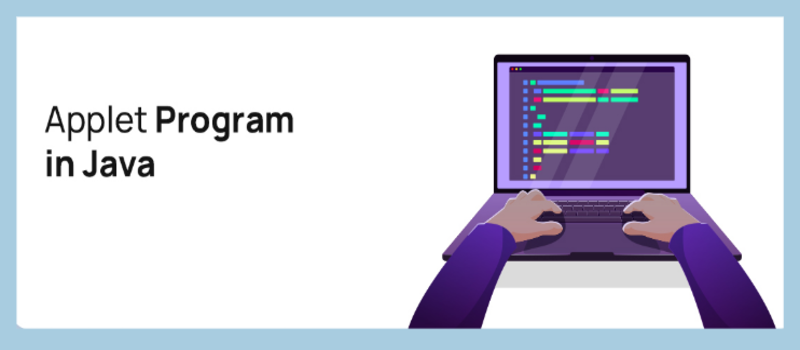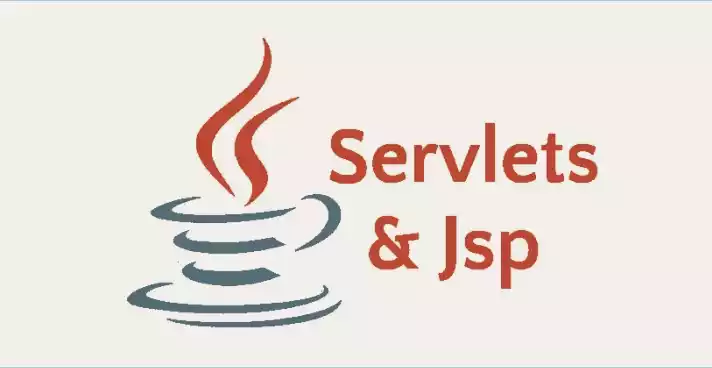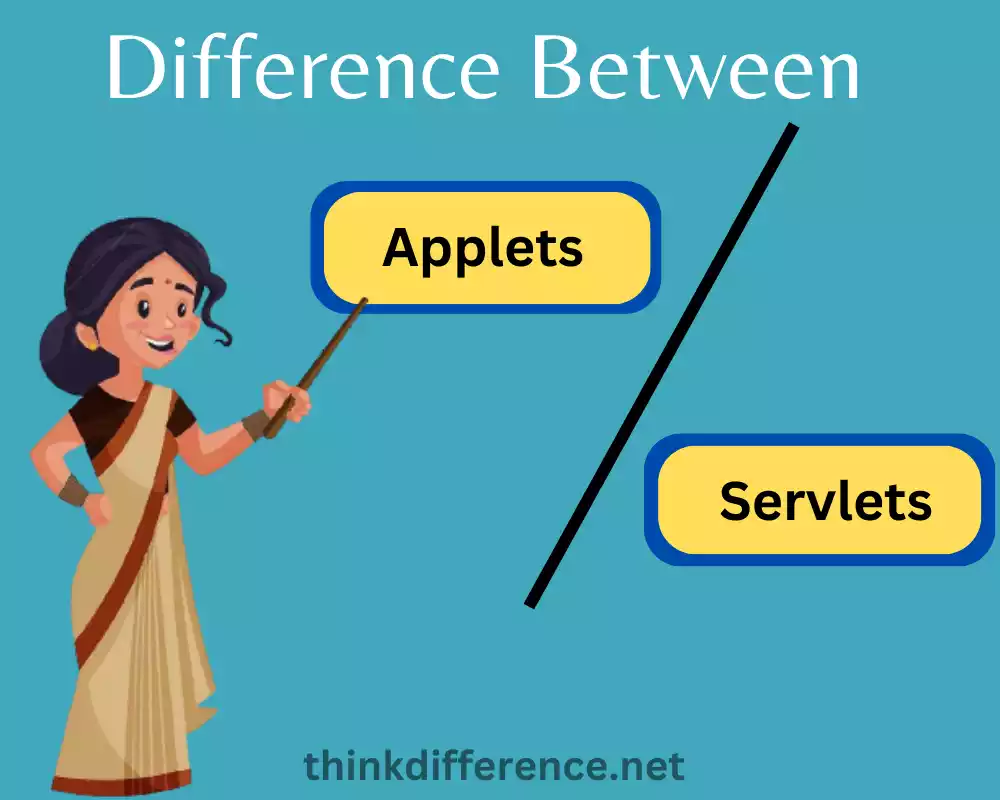Applets and Servlets are Java-based technologies that are used for web development including Applets giving clients the ability to interact with each other and Servlets concentrate on server-side processing as well as dynamic content generation.
Java Applets are small Java applications that are run by web browsers. They offer visually attractive and interactive information on web pages. Applets use a visual user interface (GUI) and run via the client side. They were very popular in the past, but are now less frequent due to security concerns as well as the emergence of web-based technologies that are not Applets.
Servlets On the other hand they are Java applications that run on the server side of web-based applications. It responds to HTTP requests, creates interactive web pages, and are none of the GUI components. They offer scalability, improved security as well as access to resources of the system.
They are used extensively in web development today for developing dynamic, data-driven sites and web-based applications.
What are Applets?
Applets are small Java applications that can be integrated into a web page to offer interactive and dynamic content to the users. Applets can be run within a web browser and were a common method of adding interactivity to websites during that time. They are platform-independent, written in Java, and can run on any system with Java Virtual Machine (JVM) support.

Applets can be embedded in websites using HTML tags, which allows them to seamlessly be integrated into the web page’s content. They work within a restricted environment known as”sandbox” to ensure security “sandbox” to ensure security and restrict their access to the system of the user.
Applets are commonly used for interactive elements, such as games, animations, or data visualizations as well as interactive forms. However, their use has decreased in recent years due to security issues as well as the advent of newer web-based technologies such as JavaScript as well as HTML5.
What is Servlets?
Servlets are Java-based server-side elements that are used in web development to manage clients’ requests and create new web-based content. Contrary to applets which are client-side Java applications that run within internet browsers, web servlets function through the server side of web-based applications.

They play an important part in the development of web-based applications that handle user requests, communicate with databases, and create web pages or other kinds of content as a result. Servlets are a part of the Java EE (Enterprise Edition) platform.
They are extremely flexible, which makes them suitable to handle a lot of concurrent client requests effectively. With a defined lifecycle, and a wide range of support within the Java ecosystem, servlets can be the fundamental element to create robust and rich web applications.
Difference Between Applets and Servlets
Here’s a comparison chart summarizing the key differences between Applets and Servlets:
| Aspect | Applets | Servlets |
|---|---|---|
| Execution Environment | Client-side within web browsers | Server-side |
| GUI Components | Yes (provide a GUI for interactive content) | No (lack GUI components) |
| Location in Web Architecture | Embedded in HTML on the client side | Respond to HTTP requests on server side |
| Access to System Resources | Limited | Greater access to system resources |
| Deployment | Embedded in web pages | Deployed on a web server with a servlet container |
| Security | Security concerns, sandboxed environment | Enhanced security due to server-side execution |
| Mobile Support | Limited | Better support for mobile devices |
Characteristics of Applets
Key Characteristics of Applets:
- Client Side: The Applets are run by the web browser of the client.
- Java-Based: Created by using an implementation of the Java programming language.
- Platform-Independent: Work on various operating systems.
- Embeddable: Embeddable HTML tags can be used in web pages with HTML tags.
- Security Sandbox: Operate within the confines of a controlled environment.
- Interactivity: Useful for animating games, animations, and user interaction.
- Utilization is decreasing: Declined in popularity due to security issues and other alternatives to HTML0.
Characteristics of Servlets
Key Characteristics of Servlets:
- Server-Side: The web server is used to handle clients’ requests.
- Java-Based: It was developed by using Java, the Java programming language.
- Dynamic Content: Create dynamic content on the web, like HTML, XML, or JSON.
- Scalability: Very scalable and effective in handling concurrent requests.
- Integration: A fundamental component of Java EE to build web-based applications.
- Lifecycle Management: Follow a well-defined lifecycle, which includes the initialization and destruction phases.
- Server-Side Processing: It is used for tasks such as processing forms, database interactions, and execution of business logic in web-based applications.
When to use Applets and Servlets
The decision to utilize applets or servlets for web development projects is contingent on the particular needs and objectives of the project.
Here are some suggestions on the best time to use each of these technologies:
Use Applets When:
- Client-Side Interactivity: If you are looking to develop interactive and dynamic content that can run directly inside an internet browser, then applets could be an appropriate option. They offer features such as games, animations, and real-time data visualization on the client side.
- Platform Independence: Applets are written in Java and are platform-independent, making them a good choice when you need your application to run consistently across different operating systems and browsers.
- Embeddable content: If you wish to insert Java-based interactive content into a webpage Applets can be effortlessly embedded with HTML tags.
Use Servlets When:
- Server-Side Processing: Serverlets can be employed for server-side processing. If your application needs server-side logic, for example, handling submissions for forms and processing data, interacting with databases, or coordinating sessions for users, servlets would be the right option.
- Dynamic Web Content: If you require to create dynamic web content from your server, servers are ideally suited to this task. They can generate dynamic HTML, XML, JSON, or other responses in response to user input or the application logic.
- Scalability: Servers are extremely capable of scaling and can efficiently manage a lot of simultaneous clients’ requests. When your app is likely to be a high-volume service and needs scalability, servlets are an excellent choice.
- Integration with Java EE: If you’re building a complete Java Enterprise Edition (Java EE) application that makes use of different Java technologies such as JSP, EJB, and other servlets, servlets are an ideal choice because they form an integral part of the Java EE platform.
Advantages of Applets and Servlets
Advantages of Applets:
- Rich User Interface: Applets offer a visual and interactive user interface, which makes them ideal for animations, graphics and games.
- Platform Independence: They are platform-independent, thanks to Java, allowing them to run on various operating systems without modification.
- Easy to Implementation: Applets can be easily integrated into web pages, which makes them fairly simple to implement for web developers.
Advantages of Servlets:
- Scalability: Servlets are capable of scaling and handling an enormous number of simultaneous requests, which makes them ideal for websites with high traffic.
- Server-Side Processo:r These enable server-side processing that allows for more complex business logic as well as database interactions.
- Access to system resources: Serverlets have access to resources of the system and libraries, which allows them to carry out tasks such as manipulating files and connecting to databases.
- Enhanced security: Servlets have more security than Applets since they operate on the server’s side, limiting vulnerability to vulnerabilities that affect clients.
- Wide Industry Adoption: Servlets are widely used and integrated into numerous web server frameworks and applications to ensure compatibility of and support.
Disadvantage of Applets and Servlets
Disadvantages of Applets:
- Security Issues: Applets have been linked to security vulnerabilities which has led to concern about the possibility of malicious executable code on the client side.
- Limited Use in Modern Times: Applets are outdated and aren’t commonly supported in modern browsers, which has reduced their use for web development.
- Java Runtime requirement: Applets requires users to be running an installed Java Runtime Environment (JRE) running. This could be a problem for certain users and can cause issues with compatibility.
- Reduced performance: Applets can suffer from a lower performance due to the necessity of transferring bytes over the network to run it on the client’s computer.
- Insufficient Mobile Support: Applets aren’t supported for mobile platforms, restricting their use in a mobile-centric environment.
Disadvantages of Servlets:
- Complexity: Serverlets can be difficult to understand and develop, especially for those who are new to the field due to their server-side nature as well as the necessity to manage HTTP requests and their responses in a programming manner.
- A limited User Interface: Servlets don’t have built-in graphic user interfaces (GUIs) which makes them unsuitable for applications that require a complex interaction with clients.
- Server Resources: Server Resources: Servlets consume huge server resources, therefore the wrong design or management of resources can affect the performance of servers.
- Complexity of Deployment: The deployment of Servlets generally requires configuring an internet server and a servlet container. This is more complex than embedding Applets within web pages.
- Java Skills Requirements: The development of Servlets requires an extensive knowledge of Java programming, and isn’t always accessible to all developers.
Best Practices and Tips
For Applets:
- Security Be aware: Be mindful of the security of applets. Make sure to sign applets if necessary, and follow safe coding practices to reduce possible vulnerabilities.
- Make it lightweight: Applets should be compact and load fast. Optimize your applet’s codes and resource to provide a smooth user experience.
- Fallback Mechanism: Offer a fallback option for situations in which Java applets cannot be accessible or supported by web browsers. Utilize HTML or other technologies to guarantee accessibility.
For Servlets:
- Thread Security: Ensure your servlets are safe for threads, particularly when dealing with session or shared resources. Make use of synchronization when needed to ensure that data integrity is not compromised.
- Separation of Concerns: Follow the Model-View-Controller (MVC) design pattern or other architectural patterns to separate business logic from presentation, improving maintainability.
- Error Handling: Implement solid error handling and logging mechanisms within your servlets to help with troubleshooting and debugging.
Ending
Applets are tiny Java programs that are run by browsers on the web, providing clients-side interaction and platform independence, however, they are becoming less popular due to security issues.
Serverlets are Java-based components employed for processing server-side and generating dynamic web content, as well as processing tasks such as the submission of forms, database interaction, and scalability in contemporary web development.



